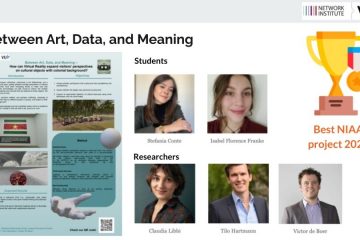The world of semantic technologies and knowledge graphs came alive at SEMANTiCS 2023, held September 20-22, 2023, at the HYPERION Hotel in Leipzig, Germany. As an attendee of this vibrant conference, I was eager to explore the latest developments in the field and engage with experts from various domains. This year, SEMANTiCS centred around the theme “Knowledge Graphs in the era of Large Language Models (LLM)”. With a captivating program, enlightening talks, and an array of valuable discussions, SEMANTiCS 2023 was an enriching experience.
The Program and Proceedings
The SEMANTiCS 2023 program was a testament to the conference’s commitment to staying at the forefront of semantic technologies. The proceedings are available here.
The theme, “Knowledge Graphs in the era of Large Language Models (LLM)”, underscores the evolving landscape of knowledge representation. LLMs, such as GPT-3, have revolutionised(or evolutionised?) natural language generation and understanding. Therefore, the necessity of a shift towards hybrid AI, where rule-based systems collaborate with LLMs, was a recurring topic. The blending of structured data with LLMs opens up new avenues for Natural Language Interpretation (NLI).
Keynote Highlights
The keynote sessions were a highlight of SEMANTiCS 2023. They provided deep insights into the challenges and opportunities in the world of knowledge graphs and large language models. Here are some key takeaways from the keynote sessions:
- Edward Curry, in his DBpedia keynote, emphasised the importance of handling messy, heterogeneous data in the era of knowledge graphs. He presented principles for creating robust data space systems.
- Xin Luna Dong, during her keynote, delved into the history of knowledge graphs and highlighted the challenges faced in knowledge extraction and fusion. She shed light on how knowledge graphs are integral to covering long-tail problems.
- Aidan Hogan explored the synergy between Large Language Models and Knowledge Graphs, presenting an optimistic vision for the future. His session introduced various cutting-edge works in the field, providing valuable resources for further exploration.
- Stephen Gilbert discussed governance and evidence frameworks for chatbots in medicine, highlighting the role of technologies in shaping human behaviour and decision-making.
- Marco Varone shared his 30-year journey in the world of language understanding, emphasising the continued need for symbolic AI in Natural Language Understanding and Generation, complementing Large Language Models.
My Conference Talk
The two talk I attended as a presenter are following:
- DBpedia: The DBpedia sessions focused on topics related to DBpedia, unified metadata, and principles of data space systems. DBpedia members took the stage to showcase their latest tools, applications, and technical developments. Being a member of DBpedia, the Network Institute(NI) at Vrije Universiteit(VU) Amsterdam shared insights how DBpedia can be a potential source of open data for the works done in collaboration with Cultural AI Lab. As a representative of Network Institute, I gave a presentation on illustrating NI’s collaboration with Cultural AI lab and research highlights from the lab. The presentation slides are here.
- Research Talks on Cultural Heritage: This panel explored knowledge graph-based representations of historical cities, virtual reality access to knowledge graphs, and the Dutch Linked Data Space for cultural heritage. I presented the findings from my accepted paper @ SEMNATiCS 2023: Polyvocal Knowledge Modelling for Ethnographic Heritage Object Provenance. This work addresses the challenge of representing the provenance of ethnographic objects. By adapting a combined model that can express the heterogeneity and polyvocality of object provenance information, the work fosters contextualization, findability, and reusability of this knowledge. Presentation slides are here.
Therefore, we (authors of the paper) received a hand-drawing illustration of the research talk. 😉
Closing Thoughts
SEMANTiCS 2023 was a valuable experience that provided insights into the dynamic and evolving world of knowledge graphs and large language models. The theme of bridging rule-based systems with LLMs, the prominence of data spaces, and the focus on scientific publishing were central themes. Notable papers, cutting-edge technologies, and inspiring keynotes made the conference a must-attend event for anyone interested in semantic technologies. While I may not have won an award, the knowledge and connections gained at the conference were certainly a reward in themselves.


